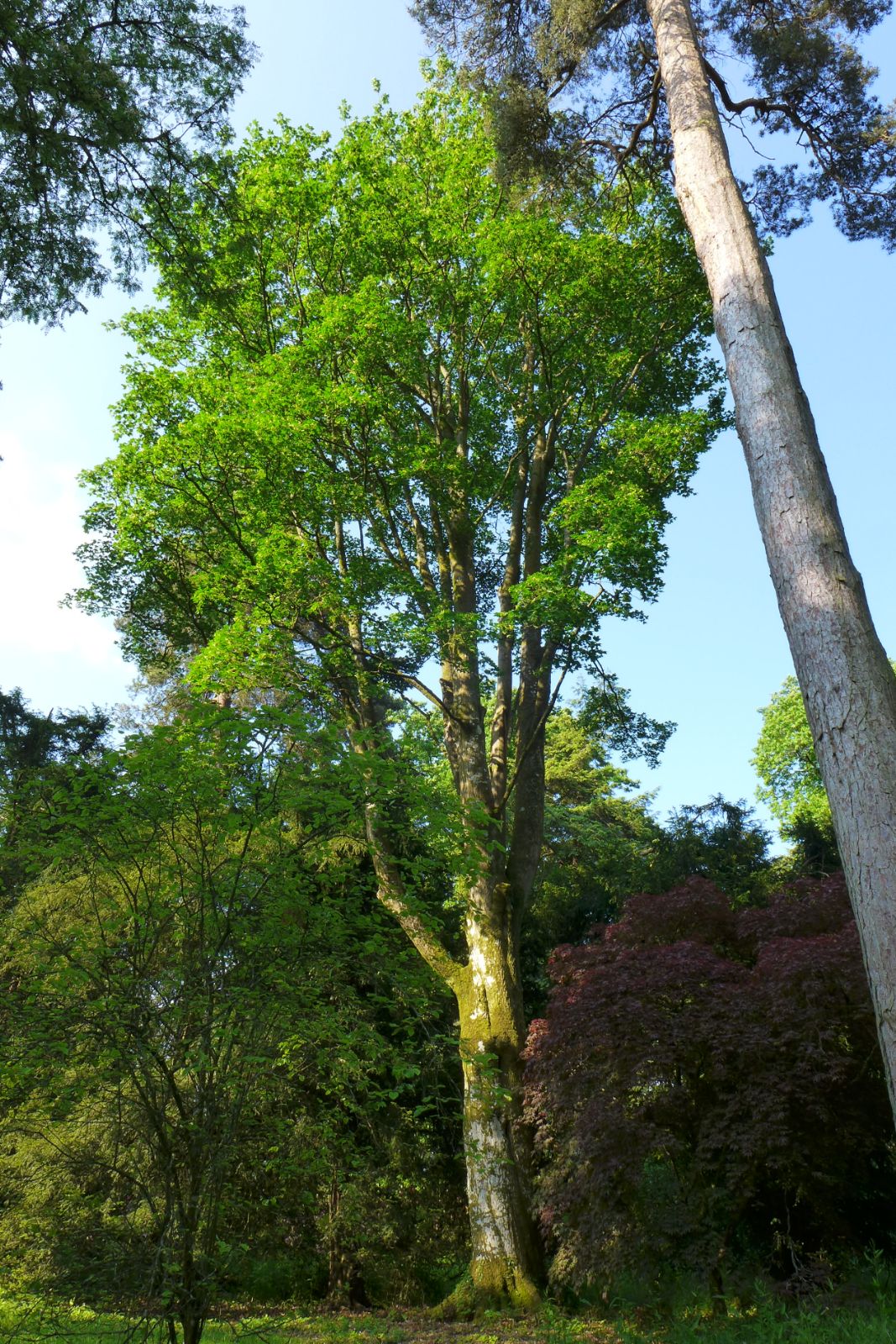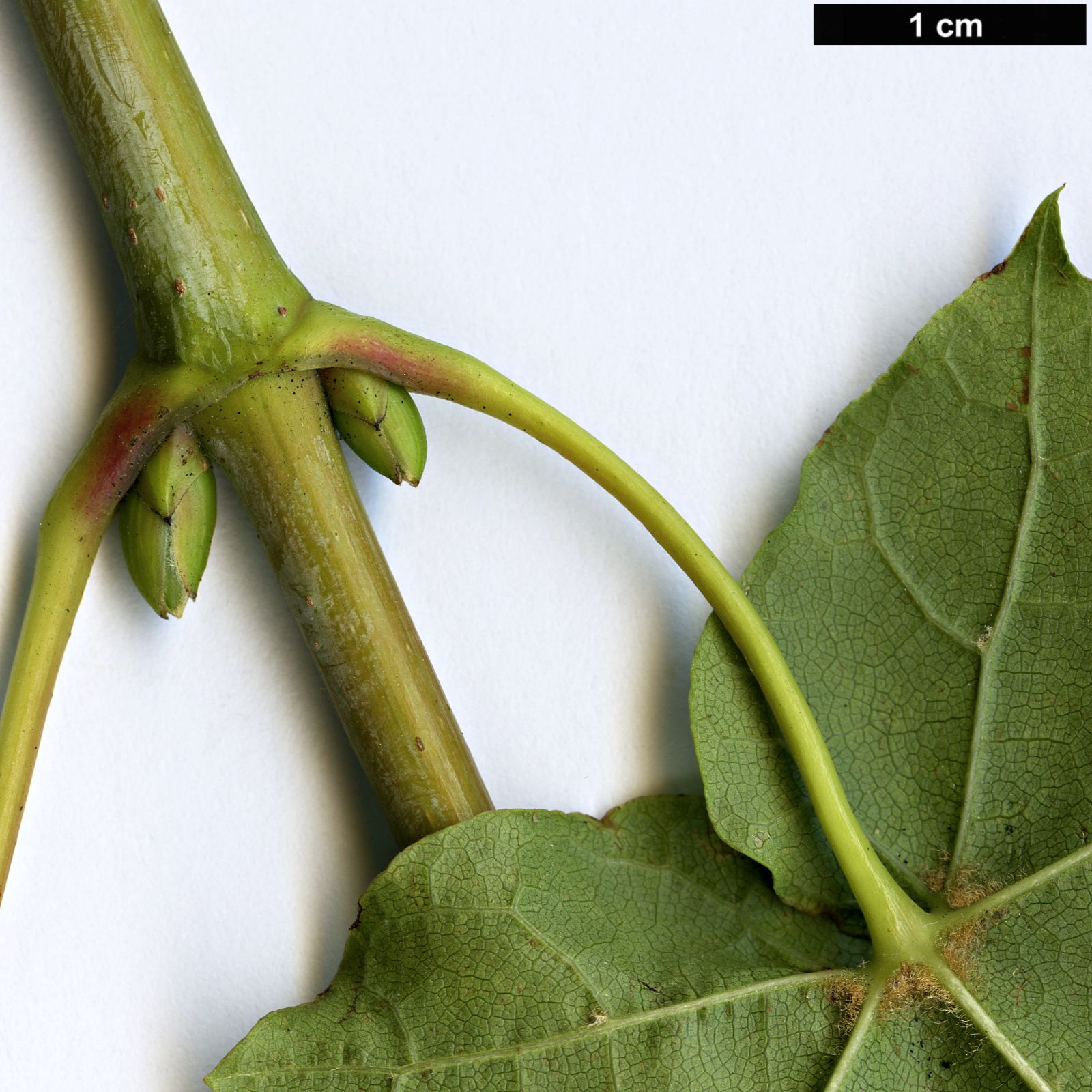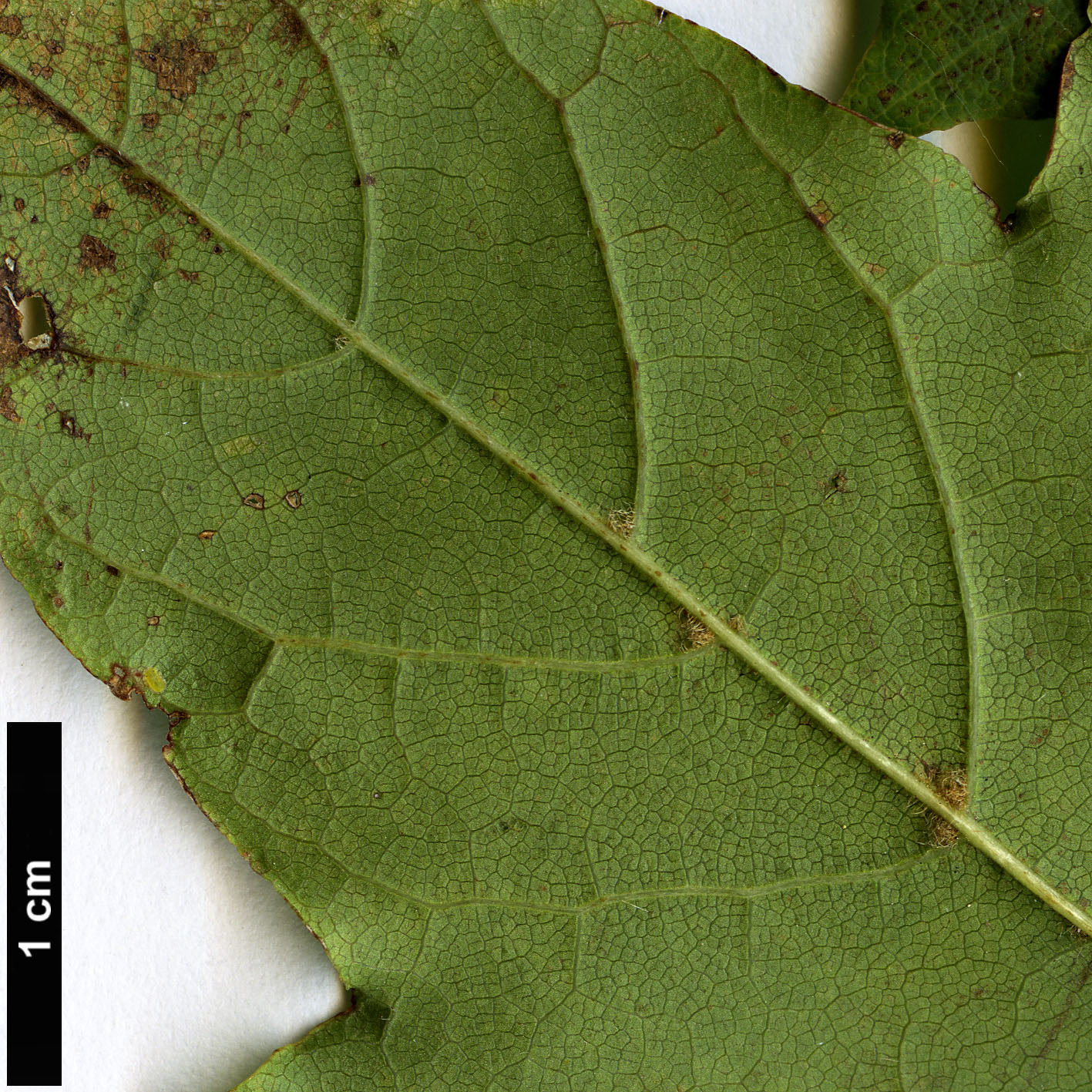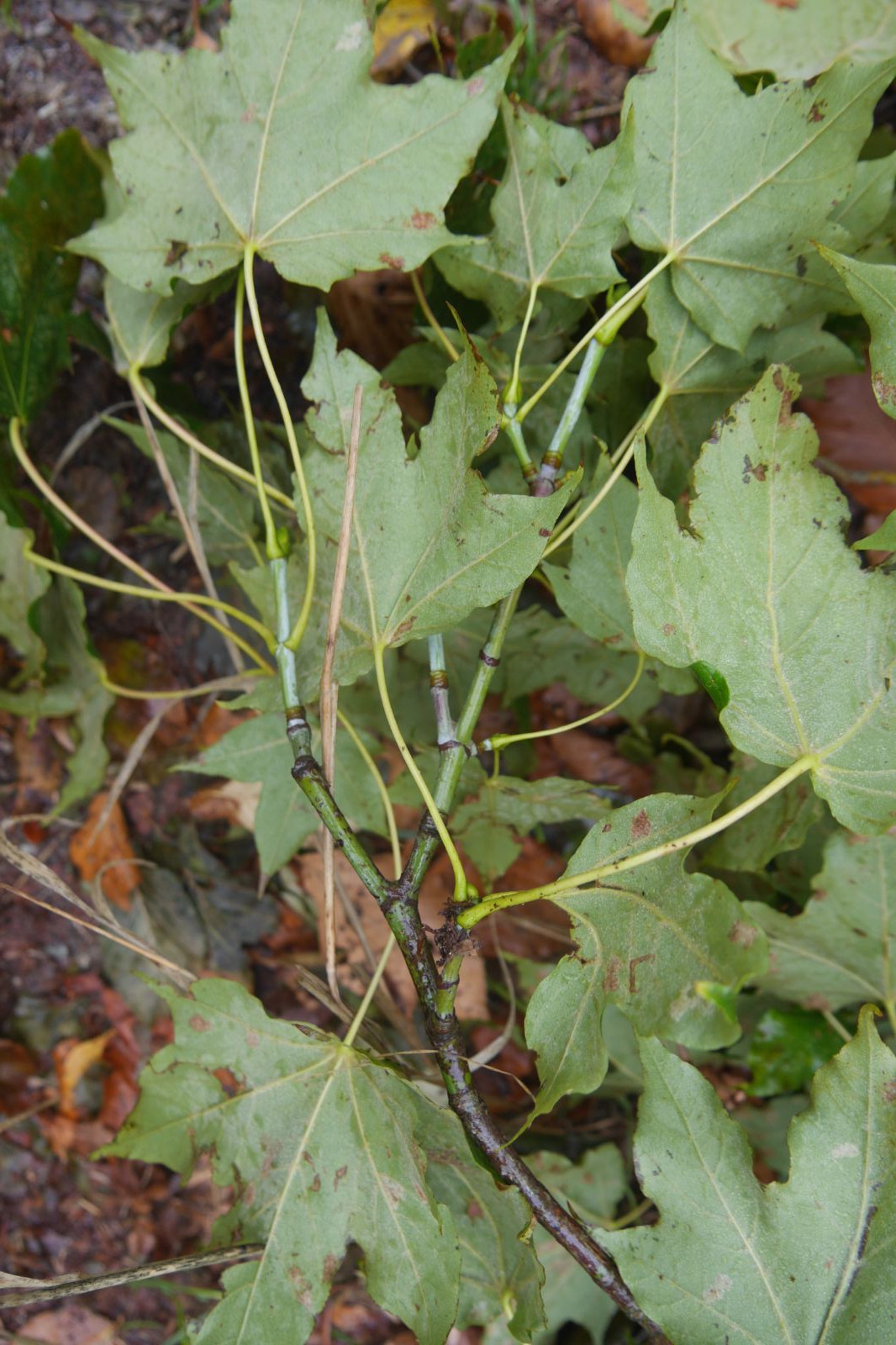Acer lobelii
Sponsor
Kindly sponsored by
The Wynkcoombe Arboretum
Credits
Dan Crowley (2020)
Recommended citation
Crowley, D. (2020), 'Acer lobelii' from the website Trees and Shrubs Online (treesandshrubsonline.
Genus
- Acer
- Sect. Platanoidea
Common Names
- Lobel's Maple
- Calabrian Maple
Synonyms
- Acer cappadocicum subsp. lobelii (Ten.) Murray
- Acer platanoides subsp. lobelii (Ten.) Loudon
Infraspecifics
Other taxa in genus
- Acer acuminatum
- Acer amplum
- Acer argutum
- Acer barbinerve
- Acer buergerianum
- Acer caesium
- Acer calcaratum
- Acer campbellii
- Acer campestre
- Acer 'Candy Stripe'
- Acer capillipes
- Acer cappadocicum
- Acer carpinifolium
- Acer 'Cascade'
- Acer caudatum
- Acer ceriferum
- Acer chapaense
- Acer chienii
- Acer circinatum
- Acer cissifolium
- Acer × conspicuum
- Acer cordatum
- Acer coriaceifolium
- Acer × coriaceum
- Acer crataegifolium
- Acer davidii
- Acer diabolicum
- Acer distylum
- Acer divergens
- Acer duplicatoserratum
- Acer elegantulum
- Acer erianthum
- Acer 'Esk Flamingo'
- Acer fargesii
- Acer fenzelianum
- Acer flabellatum
- Acer forrestii
- Acer franchetii
- Acer × freemanii
- Acer fulvescens
- Acer 'Gimborn'
- Acer ginnala
- Acer glabrum
- Acer 'Gold Coin'
- Acer granatense
- Acer grandidentatum
- Acer griseum
- Acer heldreichii
- Acer henryi
- Acer × hillieri
- Acer hookeri
- Acer hyrcanum
- Acer japonicum
- Acer kawakamii
- Acer komarovii
- Acer laevigatum
- Acer laurinum
- Acer laxiflorum
- Acer longipes
- Acer macrophyllum
- Acer mandshuricum
- Acer maximowiczianum
- Acer maximowiczii
- Acer metcalfii
- Acer miaotaiense
- Acer micranthum
- Acer 'Mindavi'
- Acer 'Minorient'
- Acer miyabei
- Acer miyabei × campestre
- Acer monspessulanum
- Acer morifolium
- Acer 'Mozart'
- Acer oblongum
- Acer obtusifolium
- Acer okamotoanum
- Acer oliverianum
- Acer opalus
- Acer orientale
- Acer palmatum
- Acer papilio
- Acer pauciflorum
- Acer pectinatum
- Acer pensylvanicum
- Acer pentaphyllum
- Acer pentapotamicum
- Acer pictum
- Acer pilosum
- Acer pinnatinervium
- Acer platanoides
- Acer platanoides × amplum
- Acer platanoides × truncatum
- Acer × pseudoheldreichii
- Acer pseudoplatanus
- Acer pseudosieboldianum
- Acer pubinerve
- Acer pycnanthum
- Acer rubescens
- Acer rubrum
- Acer rufinerve
- Acer saccharinum
- Acer saccharum
- Acer sempervirens
- Acer 'Serpentine'
- Acer serrulatum
- Acer shenkanense
- Acer sieboldianum
- Acer sikkimense
- Acer 'Silver Cardinal'
- Acer 'Silver Ghost'
- Acer sinense
- Acer sinopurpurascens
- Acer spicatum
- Acer stachyophyllum
- Acer taronense
- Acer tataricum
- Acer tegmentosum
- Acer tenellum
- Acer tetramerum
- Acer tibetense
- Acer tonkinense
- Acer triflorum
- Acer truncatum
- Acer tschonoskii
- Acer turkestanicum
- Acer tutcheri
- Acer ukurunduense
- Acer velutinum
- Acer wardii
- Acer 'White Tigress'
- Acer wilsonii
- Acer × zoeschense
A deciduous tree to 20 m in the wild. Bark greenish-grey and striated when young, turning grey but remaining smooth with age. Branchlets glabrous, purplish-greenish yellow, often glaucous bloomed, turning brown and woody only after several years. Buds, ovoid, with pairs of imbricate scales. Leaves chartaceuos to subcoriaceous, broadly pentagonal in outline, base subcordate to truncate, 5– or 7-lobed to halfway or less, 12–15 × 12–15 cm, lobes triangular to ovate, apically acuminate, margins entire, upper surface bright to glossy green, lower surface pale green, entirely glabrous, or glabrous except for tufts in vein axils, or villose throughout; petiole 5–10 cm long, green, glabrous, often grooved, broadest at base, exuding a milky sap when broken; autumn colour clear yellow. Inflorescence, corymbose, erect, few to many flowered. Flowers greenish, 5-merous. Samaras similar to those of A. cappadocicum, wings spreading nearly horizontally or more narrowly. Nutlets flattened. Flowering in May, with unfolding leaves, fruiting from September to October. (Krüssmann 1984; van Gelderen et al. 1994; le Hardÿ de Beaulieu 2003; Guarino et al. 2017).
Distribution Italy Abruzzo, Basilicata, Calabria, Campania, Lazio, Molise
Habitat Mountain woods and valleys between 200 and 1750 m asl.
USDA Hardiness Zone 5-7
RHS Hardiness Rating H6
Conservation status Least concern (LC)
Taxonomic note Treated as a subspecies of Acer cappadocicum by van Gelderen et al. (1994), it is treated as distinct by Guarino et al. (2017), whose treatment is followed here. It is part of the A. cappadocicum complex, along with A. divergens and A. shenkanense.
The westernmost representative of the Acer cappadocicum complex, Acer lobelii is the only maple endemic to Italy, where it is found in scattered, sometimes small populations along the southern Apennine mountain chain. Often a component of beech woodland, it reaches its southernmost point in Sila National Park, Calabria, where it grows virtually straight out of the rocks. Online references, deriving from Raab-Straube (2018), which state that the species also occurs in the Balkans, are unconfirmed. That record itself appears to derive from Fukarek (1971), who seems to refer it to A. platanoides rather than to A. lobelii (P. Banaszczak pers. comms. 2016). Though the species has previously been considered by some authors to be allied to A. platanoides, it has long been widely accepted that its affinities lie closer to A. cappadocicum.
A. lobelii was cultivated in Italy as early as 1683 and introduced to northern Europe and North America later, by 1838 (Bean 1976a; Jacobson 1996), though van Gelderen et al. (1994, p. 217) state slightly later: ‘about 1865’. It was named for the Flemish botanist Matthais de L’Obel (Jacobson 1996), for whom the genus Lobelia L. is also named.
Notable for the fastigiate form of the vast majority of trees in cultivation, it is valued in some urban areas, at least in the United Kingdom, as a street tree, a purpose for which it is better suited than the related A. cappadocicum. That this upright form can be used to distinguish A. Iobelii from A. cappadocicum is not always reliable, as A. lobelii can be more broad spreading, with both forms observed its native habitat (D. Crowley, pers. obs. 2016, 2017), while A. cappadocicum can also make a very upright tree. A fine fastigiate example of that species growing at Arboretum Wespelaar, collected as seed in Georgia, is testament to that (D. Crowley, pers. obs. 2019).
The foliage characters of A. lobelii are also more variable than often described, with leaves anywhere between entirely glabrous on the lower surface to persistently felty-pubescent. Juvenile specimens grown from seed of pubescent parents do not always possess this character, though pubescent and glabrous leaf forms can be found on different trees growing together in the wild: It is not necessarily a trait that is consistently passed from parent to offspring.
Recent introductions of the species were made from Basilicata and Campania via a Westonbirt-led expedition in 2017, and represented in cultivation by numbers WISS 5, 6, 7, 8 and 9. All grow at Westonbirt and all but WISS 7 have also been planted at Arboretum Wespelaar (K. Camelbeke, pers. comms. 2019). These are proving vigorous in youth and, to varying degrees, exhibit the glaucous-bloomed shoots that can help distinguish it from A. cappadocicum, though this character can also be shown by that species. More consistent differences are the five, rather than seven-lobed leaves on mature plants of A. lobelii, as well as shorter peduncles on its inflorescences (Rushforth 1999). It also lacks the suckering habit of A. cappadocicum, except of course when that is used as a rootstock, which in more often than not the case with more mature plants in cultivation!
Fine old trees of Acer lobelii, including the UK and Ireland Champion, standing at 26 m tall and 0.91 m dbh in 2014 (The Tree Register 2018), grow at Westonbirt, while other mature examples grow in mainland European collections including Arboretum Tervuren, Belgium and Arboretum Trompenburg, the Netherlands (monumentaltrees.com 2018). It appears less commonly grown in North American collections, and while its use in laterally restricted spaces in the Vancouver area is advocated, it is not readily available there (Justice, in prep.).
'Mitchell's Gold'
An attractively gold-leaved clone, selected by Alan Mitchell. The original tree, planted in 1981, had reached 15 m by 2012, when his widow Philippa left the family home (D. Alderman, pers. comm. to John Grimshaw 2014). A sucker detached from that tree was planted at the Yorkshire Arboretum in 2014 through the good offices of David Alderman of the Tree Register. It has grown steadily and is an attractive sight during late spring and early summer, fading to yellowish-green later. It has moderately good yelow autumn colour. In very hot, dry weather it is prone to some sun-scorch. It remains extremely rare and has not been commercially propagated.












